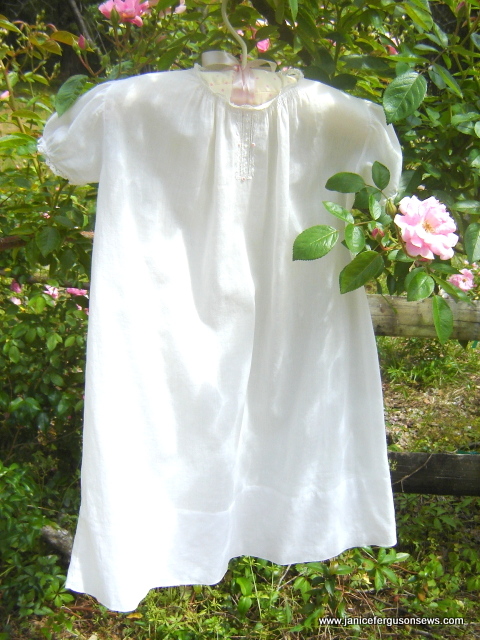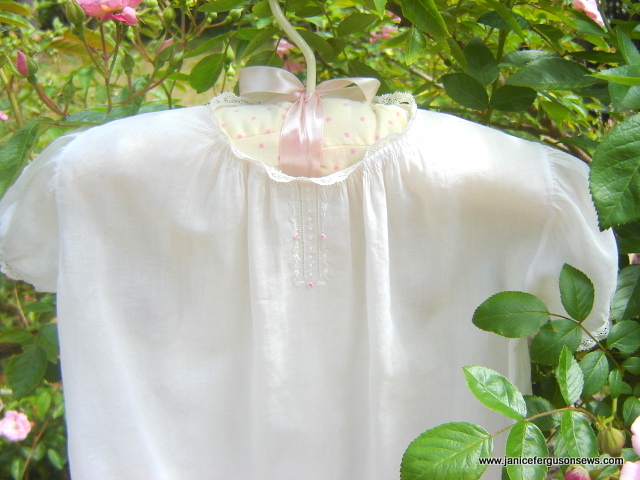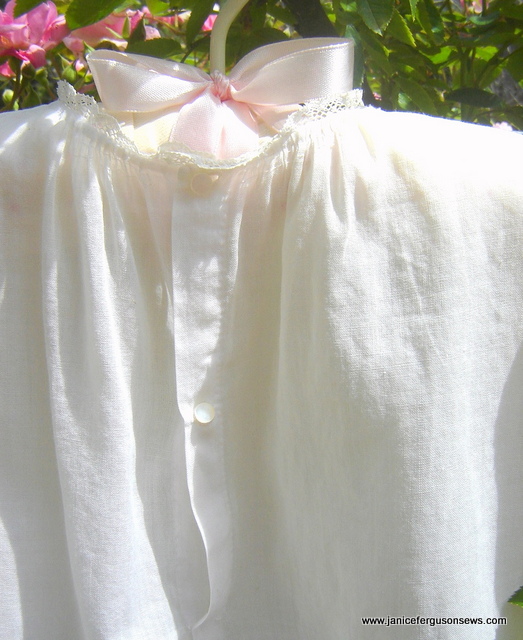It seems that everyone who sews finds special joy in creating dainty baby things. I’ve made my fair share and yet I look forward to making more as I hope for yet another grandchild. Given my enthusiasm for sewing what my friend Janice Kay calls “bitty baby things,” I still cannot resist buying antique dresses when I come across a sweet one.
This little antique dress, considered meritorious for its simplicity, hangs with 5 others on a twig swag in my nursery (see Nana’s Nursery) . The sleeves are set in and the gentle fullness of the dress is gathered at the neckline. A gathering thread is worked just under the binding to help control the fullness around the neck.
The binding itself is a tiny 1/8″ wide, turned to the inside. To this, a 1/4″ French baby lace is hand whipped, in the same manner as the sleeves. Every stitch is done by hand, from the tiny French seams to the embroidery and drawn thread work.
The back is unadorned but interesting. I have never like putting in a continuous lap placket and often object to the bulk it creates. On Laurel’s Easter dress, made of ultra sheer Swiss batiste, I followed Debbie Glenn’s directions for a simple folded placket from a back issue of Sew Beautiful magazine. As it turns out, both of my back opening antique daygowns use that same technique.
Another notable detail of the back is that the 6″ opening has just two tiny pearl buttons. I always feel like I’m skimping if I use fewer than 3, though a squirming baby is dressed more easily with fewer buttons. Now, I feel like I have permission to use just two. Why is that?
Our two older grandchildren, who live nearby, have been in our home at least twice a week since their birth. As infants, both were prolific spitters, so I had ample opportunity to pull an antique yet serviceable daygown off the wall to outfit them in a fresh dress.
Maybe it was just my personal justification for having bought them and for having them displayed in the nursery. But it pleased me to see them looking so sweet in classic dresses older than I. Well, I hope they are older than I am. My personal standard for an “antique” is that it must be older than me. There seem to be fewer and fewer so called antiques that meet this standard. Why is that?





